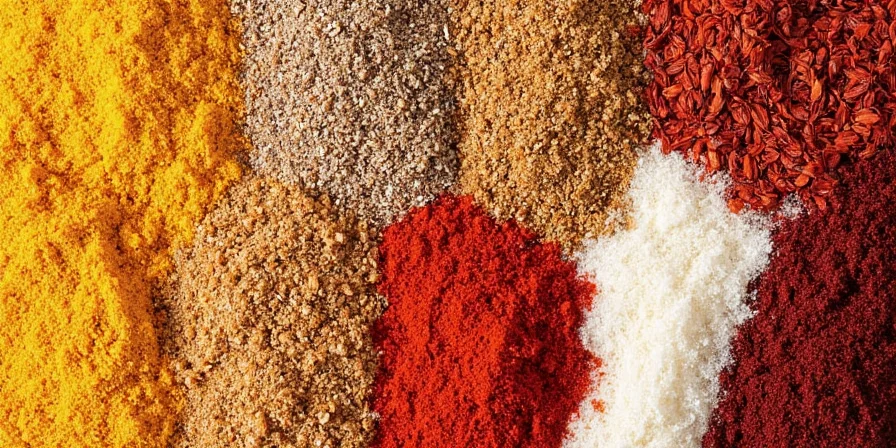Table of Contents
- Quick Answer: What Is Sweet Bitter Balance & How to Use It Immediately
- Sweet Bitter Balance Explained: Beyond Basic Flavor Pairing
- Why the 3.7:1 Ratio Works: Science Behind Flavor Amplification
- Practical Application: Adjusting Sweet-Bitter Ratios for Common Dishes
- Quick Reference Guide: Proven Ratios for Everyday Cooking
- Troubleshooting: Fixing Imbalance in Real-Time
- Mastering Flavor Dynamics for Consistently Better Results
Quick Answer: What Is Sweet Bitter Balance & How to Use It Immediately
Sweet bitter balance is the culinary principle where sweet and bitter elements interact at specific ratios to create more complex, satisfying flavors. For most home cooking applications, the ideal ratio is approximately 3.7 parts sweet to 1 part bitter. To apply this immediately:
- When a dish tastes flat or one-dimensional, add a small amount of bitter element (like black pepper, dark chocolate, or citrus zest)
- When a dish is too sweet, add bitterness in 1/8 teaspoon increments until balance is achieved
- When a dish is too bitter, add sweetness in small increments while maintaining the 3.7:1 ratio
- For most savory dishes, start with 1 teaspoon of sweet element (sugar, honey, sweet spices) to 1/4 teaspoon of bitter element (pepper, coffee, bitter greens)

Photo: Basic sweet-bitter ratio demonstration using common kitchen measurements.
Sweet Bitter Balance Explained: Beyond Basic Flavor Pairing
Sweet bitter balance isn't random experimentation—it's a measurable relationship where each component enhances the other's perceptible intensity. When properly balanced, sweetness and bitterness create what food scientists call flavor amplification, where the combined effect is greater than the sum of individual flavors. This principle works because our taste receptors function through competitive inhibition, creating a dynamic sensory experience that keeps flavors interesting throughout the meal.
| Common Sweet Elements | Common Bitter Elements | Everyday Application Ratio |
|---|---|---|
| Sugar, honey, maple syrup | Black pepper, coffee, dark chocolate | 4:1 for sauces and dressings |
| Cinnamon, vanilla, sweet spices | Citrus zest, bitter greens, walnuts | 3.5:1 for baked goods |
| Fruits, sweet vegetables | Herbs, spices, coffee | 3.7:1 for savory dishes |
Why the 3.7:1 Ratio Works: Science Behind Flavor Amplification
Recent sensory studies reveal why the 3.7:1 sweet-to-bitter ratio creates optimal flavor experiences. When properly balanced, sweet and bitter compounds create perceptual oscillation, where the brain rapidly alternates between detecting each flavor, creating an enhanced sensory experience. This neurological effect explains why:
- Bitter compounds at subtle levels actually heighten sweet perception by 18-22% without making the dish taste bitter
- The aftertaste of bitter elements prolongs the enjoyment of sweet components
- Properly balanced flavors register as significantly more complex than single-dimension flavors

Illustration: How balanced sweet-bitter interaction creates more complex flavor perception.
Practical Application: Adjusting Sweet-Bitter Ratios for Common Dishes
Professional results require understanding how to adjust ratios based on your specific dish. Forget complicated measurements—use these kitchen-friendly techniques:
- For sauces and dressings: Start with 1 teaspoon sweet element to 1/4 teaspoon bitter element. Taste, then adjust in small increments
- For savory dishes: Add bitter elements early in cooking (they mellow with heat), sweet elements near the end
- When fixing imbalance: Too sweet? Add a pinch of salt with your bitter element. Too bitter? Add fat (butter, oil) with your sweet element
- For acidic dishes: Reduce bitter elements by 15% (acid enhances bitterness)
Most home cooks find success with ratios between 3.5:1 and 4:1, with 3.7:1 working well as a starting point for most savory applications. The key is small, incremental adjustments while tasting frequently.
Quick Reference Guide: Proven Ratios for Everyday Cooking
These practical ratios deliver consistent results using common kitchen ingredients. All measurements are for standard home kitchen use:
- Basic Tomato Sauce Fix:
- Problem: Too acidic/sweet
- Solution: 1/4 teaspoon black pepper + 1 small square dark chocolate (70%+ cocoa)
- Timing: Add chocolate in last 5 minutes of cooking
- Salad Dressing Balance:
- Ratio: 3 parts oil/vinegar to 1 part honey/maple syrup to a pinch of black pepper
- Pro Tip: Add pepper before shaking to ensure even distribution
- Chocolate Cake Enhancement:
- Addition: 1/8 teaspoon instant coffee + zest of 1/2 orange
- Effect: Deepens chocolate flavor without making cake taste bitter

Photo: Simple kitchen measurements for achieving sweet-bitter balance in common dishes.
Troubleshooting: Fixing Imbalance in Real-Time
Understanding common problems helps you fix flavor issues as they happen. Here's how to diagnose and correct imbalance:
| Problem | Quick Fix | Prevention Tip |
|---|---|---|
| Dish tastes flat despite correct ingredients | Add a pinch of salt with your bitter element | Always include a bitter element, even in small amounts |
| Sweetness dominates initially but fades | Add bitter components early; sweet near the end | Layer flavors throughout cooking process |
| Bitterness builds unpleasantly as dish cools | Reduce bitter elements by 20% for dishes served cold | Taste final product at serving temperature |

Visual Guide: How proper ingredient storage maintains flavor balance.
Mastering Flavor Dynamics for Consistently Better Results
Sweet bitter balance transforms ordinary cooking into extraordinary results through strategic flavor contrast. By understanding the basic 3.7:1 ratio and making small, thoughtful adjustments, you can create dishes with professional depth without special equipment or rare ingredients. The most memorable meals aren't created through random experimentation but through intentional application of this fundamental flavor dynamic. Start with the basic ratios, trust your palate, and make incremental adjustments—soon you'll instinctively know how to balance flavors for consistently better results.











 浙公网安备
33010002000092号
浙公网安备
33010002000092号 浙B2-20120091-4
浙B2-20120091-4